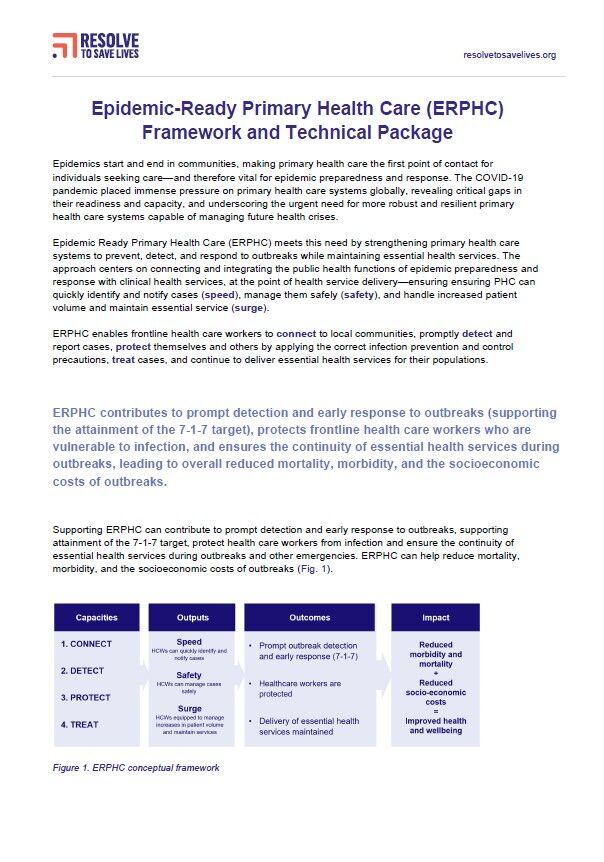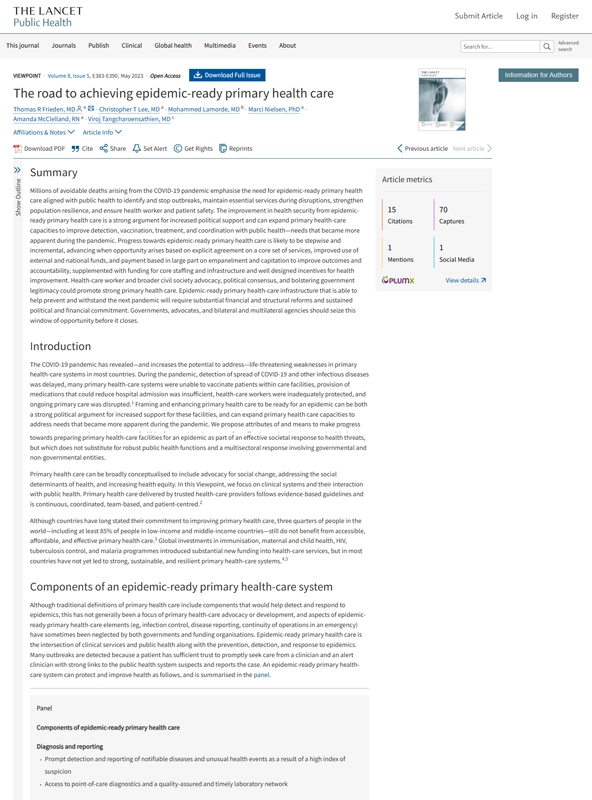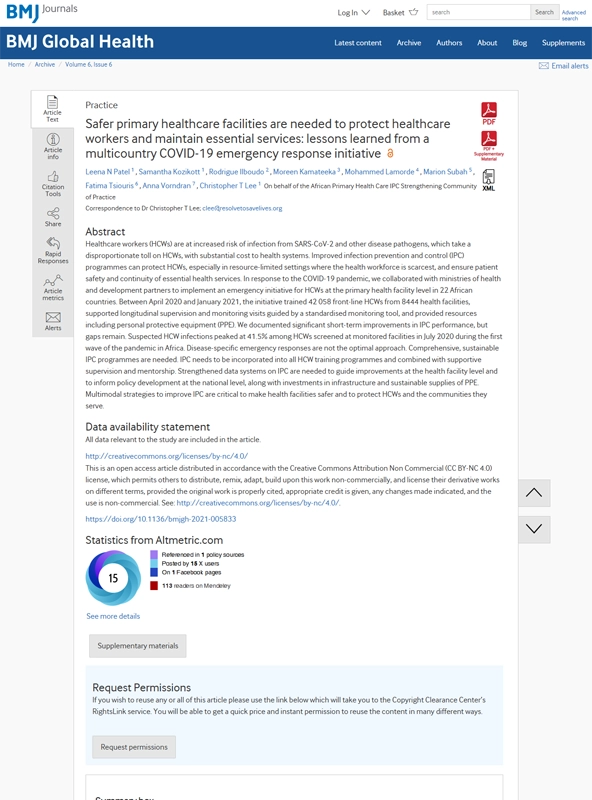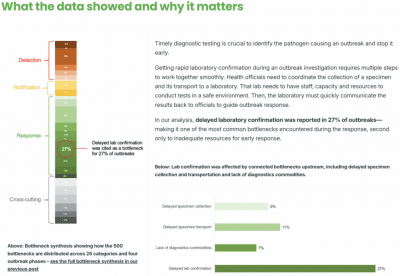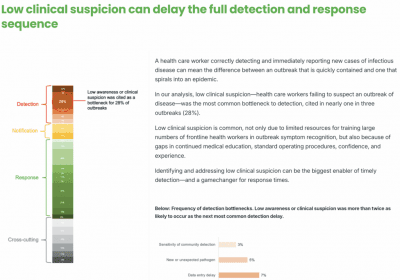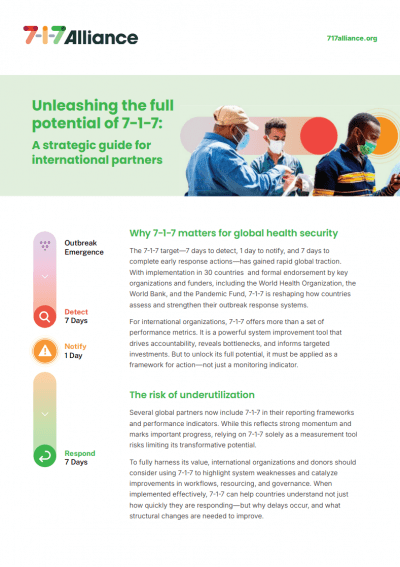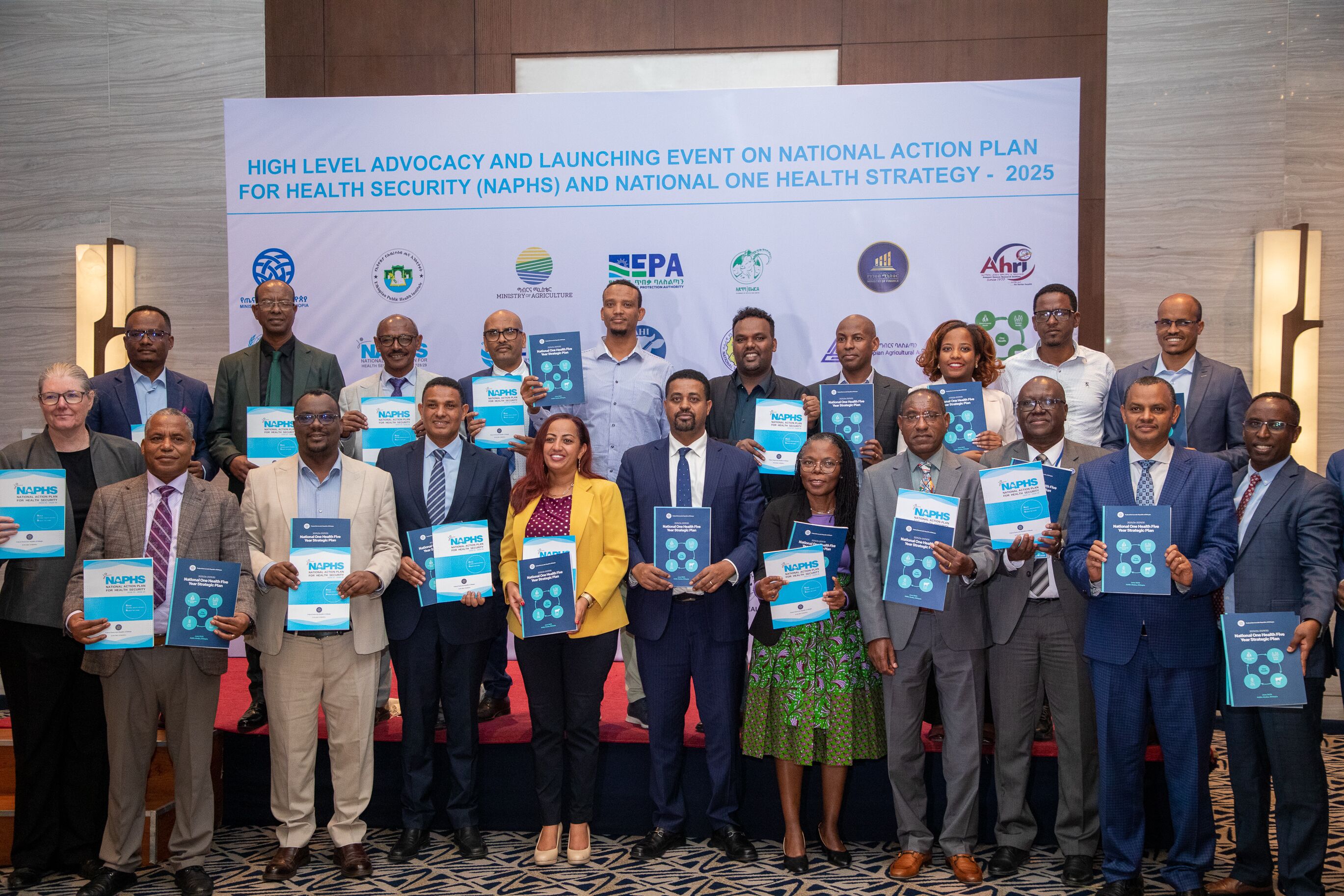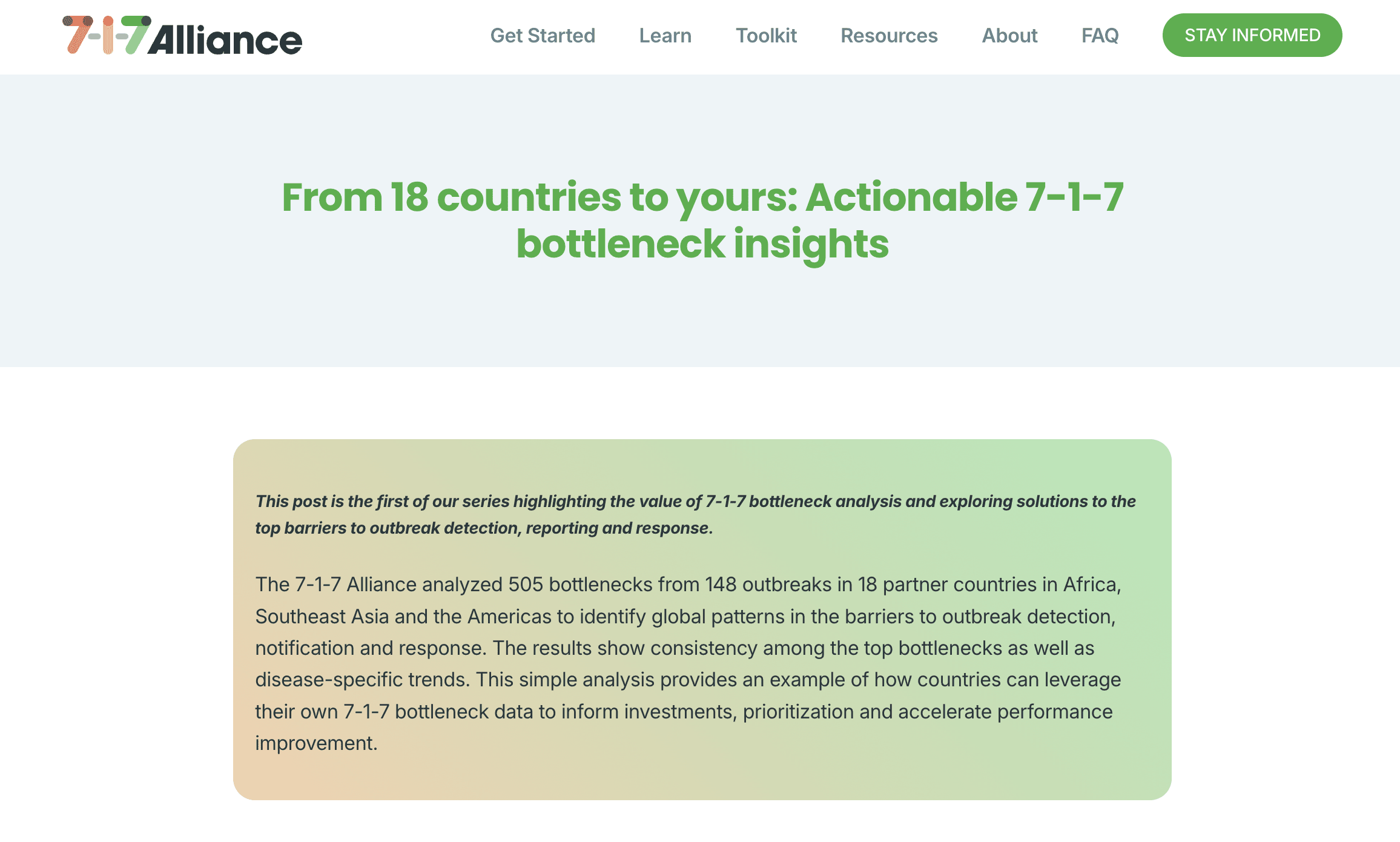
You’ve been redirected from preventepidemics.org.
Prevent Epidemics is part of resolvetosavelives.org.
How we save lives / Epidemic prevention / 7-1-7 Early Disease Detection
7-1-7: A global target for early detection & response
All countries require strong epidemic preparedness to effectively fight infectious disease threats when they emerge.
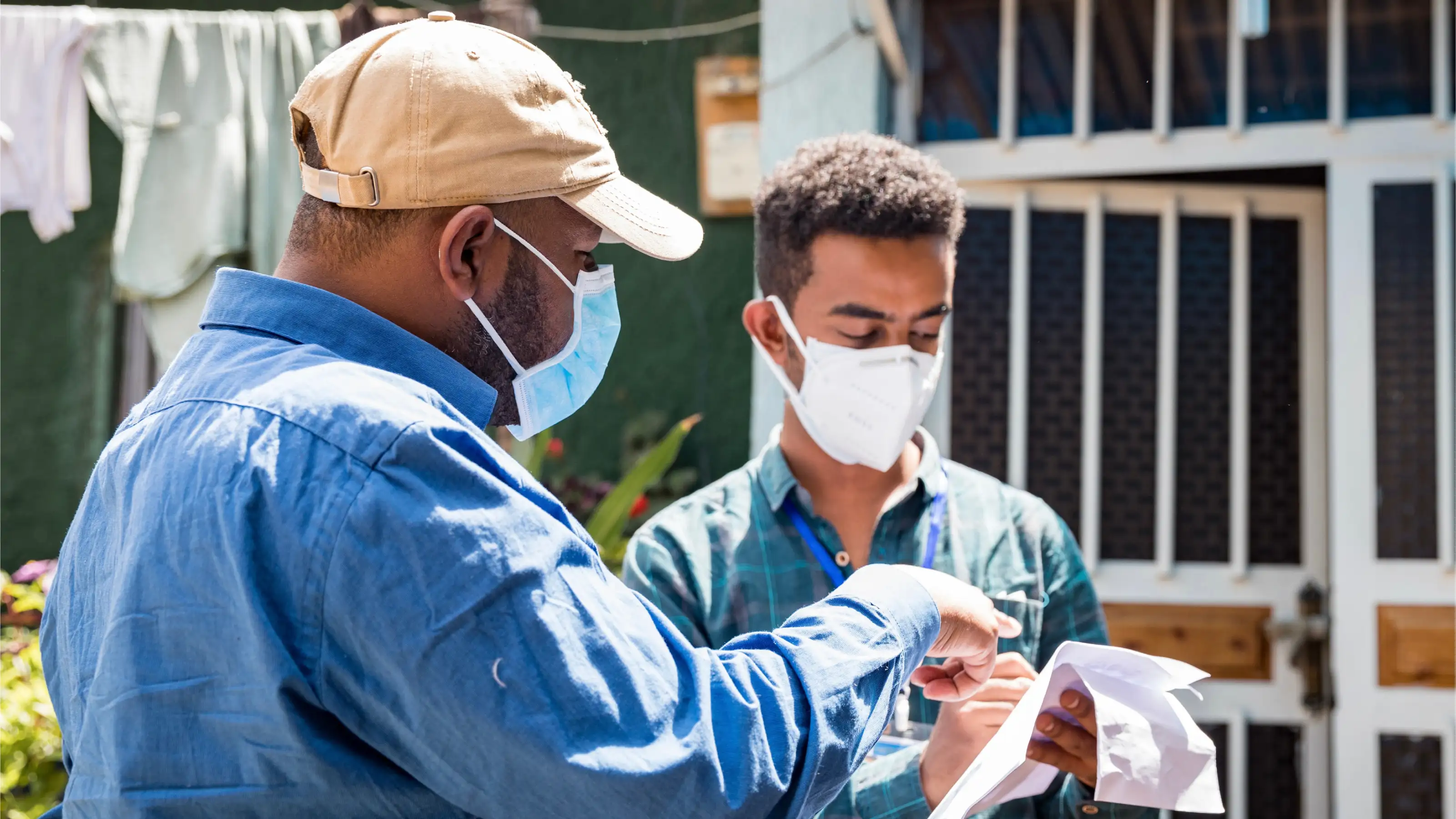
However, being ready for an epidemic on paper does not always equal strong performance in real life. Measuring a country’s ability to respond requires review of how all elements of the global health security system—from laboratories and surveillance, to universal health coverage and leadership—work together to detect and respond to disease threats.
It’s crucial that countries act quickly when responding to outbreaks—infectious disease threats do not respect borders and can travel the world in just 36 hours.
7-1-7 is the first real-time, start-to-end assessment of how quickly a country detects and contains infectious disease threats.
These timeliness metrics have been included in the pandemic fund’s results framework because:
- They’re simple, focused and easy for anyone to understand.
- They measure the how well the entire detection and response system is working under real world conditions—not just individual components (and not just on paper).
- They encourage rapid performance improvement—stakeholders can continuously evaluate timeliness to identify where particular weaknesses in the system cause bottlenecks—and and then test solutions to resolve them.
7-1-7 is the first real-time, start-to-end assessment of how quickly a country detects and contains infectious disease threats

These timeliness metrics have been included in the pandemic fund’s results framework because:
These timeliness metrics have been included in the pandemic fund’s results framework because:
- They’re simple, focused and easy for anyone to understand.
- They measure the how well the entire detection and response system is working under real world conditions—not just individual components (and not just on paper).
- They encourage rapid performance improvement—stakeholders can continuously evaluate timeliness to identify where particular weaknesses in the system cause bottlenecks—and and then test solutions to resolve them.
Why 7-1-7?
It creates transparency, facilitates advocacy and promotes accountability
Clear and simple metrics make it easier to communicate with partners, politicians and with the public, as the United Nations 90-90-90 goal for HIV demonstrates.
It promotes rapid improvement in early outbreak detection and response
Many of the bottlenecks surfaced by 7-1-7 turn out to be easy and inexpensive to fix. Bigger problems get addressed faster with clear data to inform how activities and funds should be prioritized.
The 7-1-7 Alliance now includes 20 countries and counting, and has been adopted by the WHO Regional Office for Africa as part of their Regional Strategy for Health Security and Emergencies 2022-2030. Now included in The Pandemic Fund’s Results Framework, interest in support for the 7-1-7 approach is growing worldwide.


Created and hosted by Resolve to Save Lives and chaired by Dr. Issa Makumbi of Uganda’s Public Health Emergency Operations Center, the 7-1-7 Alliance supports implementation of the 7-1-7 target with technical assistance, financial support and a global community of practice.

For a more in-depth breakdown of 7-1-7, read our team’s article, 7-1-7: an organising principle, target, and accountability metric to make the world safer from pandemics, which was published in The Lancet.
What does implementation of 7-1-7 look like? A second Lancet article offers a deep dive into the implementation in five pilot countries and the identification of bottlenecks to and enablers of system performance.
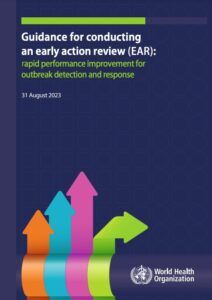
The World Health Organization developed a guidance on conducting an early action review (EAR). The guidance leverages the 7-1-7 target to help countries optimize early detection, timely notification, and swift response actions during public health emergencies.
